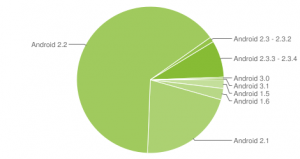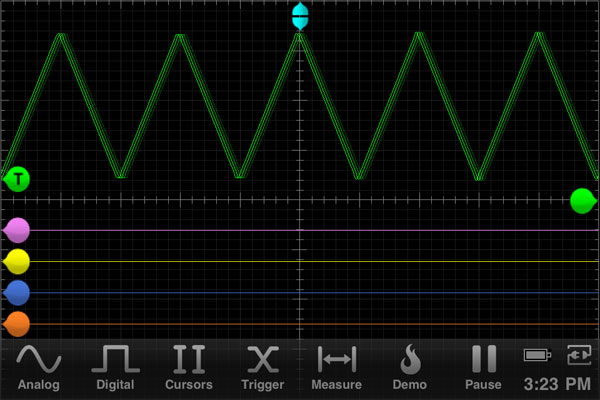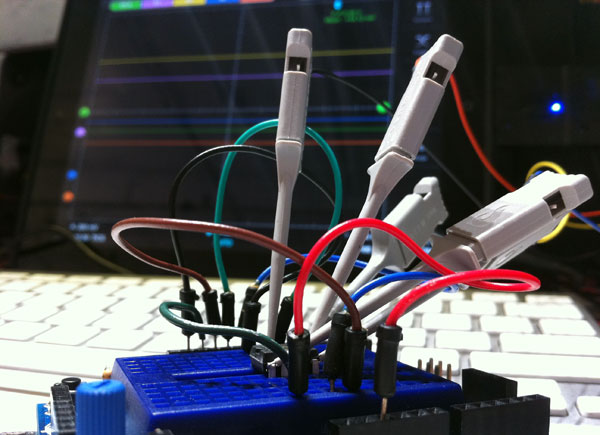Via
ZDNet (By Steven J. Vaughan-Nichols)
-----
 I use Android every day both on my Droid II smartphone and my Barnes & Noble Nook Color e-reader/tablet. I like it a lot. But, I also have concerns about how it’s being developed and being presented to customers.
I use Android every day both on my Droid II smartphone and my Barnes & Noble Nook Color e-reader/tablet. I like it a lot. But, I also have concerns about how it’s being developed and being presented to customers.
Before
jumping into why I think Android faces trouble in the long run, let me
mention one problem I don’t see as standing in Android’s way: The Oracle lawsuits Yes, Oracle claims that Google owes them billions in damages for using unlicensed Java technology in Android’s core Dalvik virtual machine.
I
follow patent lawsuits and here’s what going to happen with this one.
It will take years and millions of dollars in legal fees, but eventually
Google will either beat Oracle’s claims or pay them hefty licensing
fees. So, yes, one way or the other Google, and to a lesser extent
Oracle, will spend hundreds of millions on this matter before it’s done.
But, so what?
The mobile technology space is filled with patent
and licensing lawsuits. When I checked on these lawsuits in mid-October
there were dozens of them. Since then, Apple has sued Samsung; Dobly has sued RIM; and Lodsys, a patent troll, vs. Apple and all its iOS developers, By the time I finish writing this column someone will probably have sued someone else!
The
end-result of all this, besides lining the pockets of lawyers, is that
we’re all going to have pay more for our tablets and smartphones. It
doesn’t matter who wins or who loses. Thanks to the U.S.’s fouled up patent system, everyone who’s a customer, everyone who’s a developer, and everyone’s who in business to make something useful is the loser.
That said, here’s where Android is getting it wrong.
1. Too many developer versions
When Google first forked Android into two versions–The 2.x branch for smartphones and the 3.x for tablets–I didn’t like the idea. I like it even less now.
According to the Android Developers site, there are eight (8!) different versions of Android with market presence.
If we ignore the out-dated Android 1.5 and 1.6, that still leaves us
with six shipping versions that a developer needs to keep in mind when
he or she is creating or updating a program. In the case of the 2.x and
3.x lines that’s a lot of work. Oh, and yes there are now two versions
of 3.x: 3.0 and 3.1.

Currently used versions of Android.
Who can keep up with this? I couldn’t. But, wait there’s more!
2. Too many OEM versions
You’d
think that Android 2.2 on a Droid II would be the same on the Samsung
Galaxy Pro. You’d think wrong. Every original equipment manufacturer
(OEM) insists on tweaking the software and adding their own particular
programs to each phone. Sometimes, as James Kendrick points out, the same hardware doesn’t even work with Android on the exact same model.
Kendrick has found that the useless microSD card slot in the Motorola XOOM, even after its Android 3.1 update, still doesn’t work. Or, to be exact, it won’t work in the U.S. In Europe, XOOM users will get a fix that will let them use microSD cards.
Argh!
Here’s
a history lesson for Google and the rest of the movers and shakers of
Android. I’ve seen a “common” operating system used in this way before
during a technology boom. Once, it was with the pre-PC microcomputers.
They all ran CP/M-80, but every vendor had their own little tricks they
added to make their computers “better.” Then along came PC-DOS, soon to
be followed by MS-DOS, and all those companies-KayPro, Osborne, and
IMSAI-became answers in computer trivia games.
How did Microsoft
make its first step to becoming the Evil Empire? By delivering the same
blasted operating system on every PC. If users can’t count on using the
same programs and the same hardware accessories, like microSD cards, on
Android, they’re not going to stick with Android devices. If things
don’t get better with Android, who knows, maybe Windows 8 will have a shot on tablets after all!
3. Still not open enough
Google, for reasons that still elude me, decided not to open-source Android 3.x’s source code. This is so dumb!
I’m not talking about playing fast and loose with open-source
licenses or ethics-so Google really stuck its foot into a mess with this
move. No, I’m saying this is dumb because the whole practical point of
open source make development easier by sharing the code. Honeycomb’s
development depends now on a small number of Google and big OEM
developers. Of them, the OEM staffers will be spending their time making
Honeycomb, Android 3.0, work better with their specific hardware or
carrier. That doesn’t help anyone else.
4. Security Holes
This one really ticks me off. There is no reason for Android to be
insecure. In fact, in some ways it’s Not insecure. So why do you keep
reading about Android malware?
Here’s how it works. Or, rather, how it doesn’t work. Android itself,
based on Linux, is relatively secure. But, if you voluntary, albeit
unknowingly, install malware from the Android Market, your Android tablet or smartphone can’t stop you. Google must start checking “official” Android apps for malware.
Google has made some improvements to how it handles Android malware. It’s not enough.
So until things get better, if you’re going to download Android
programs by unknown developers, get an Android anti-virus program like Lookout. Heck, get it anyway; it’s only a matter of time until someone finds a way to add malware to brand-name programs.
5. Pricing
Seriously. What’s with Android tablet pricing?
Apple owns the high-end of tablets. If someone has the money, they’re
going to get an iPad 2. Deal with it. Apple’s the luxury brand.
Android’s hope is to be the affordable brand. So long as OEMs price
Android’s tablets at $500 and up, they’re not going to move. People will
buy a good $250 Android tablet, which is one reason why the Nook is selling well. They’re not buying $500 Android tablets.
Here’s what I see happening. Android will still prosper… right up to
the point where some other company comes out with an affordable platform
and a broad selection of compatible software and hardware. Maybe that
will be webOS, if HP drops the price on its TouchPads. Maybe it will be MeeGo.
Heck, it could even be Windows 8. What it won’t be though in the long
run, unless Android gets its act together, will be Android.
-----
Personal Comments:
In order to counteract a bit what is a kind of severe or pessimistic
view for Android's future, I would like to underline that Android has
to face major hardware evolution in a very short time. Duplicity of
hardware constructors that have jumped in the Android adventure has also
participated to version split. But as far as I have seen, it seems to
me that constructors are pretty fast in proposing to their customers upgrades
of their in-house Android versions, in order to stick to the very last
'official' Android version (the only one that all consumers expect to
have on their mobile device). For example, HTC has nicely managed this
while adding a very impressive GUI on the top of Android, that kind of
GUI that has hardly suggested that Android can be a real competitor to
iOS. So I do not see multiple Android versions as a negative point but
more as a rewarding one.
In
the same time Apple pushes users to upgrade their devices to the very
last iOS version without that much concern about user's wishes. When
compiling a program dedicated to Apple devices, you have to declare if
it is targeting iPhone/iPod and/or iPad with specifying a minimum
compatible version (because of core libraries evolution), which seems
very similar to me to handle kind of distinct versions of a similar
OS... thus being similar to what's occur at the Android OS level, but
may be in less 'democratic' way for the Apple's OS.
About
the points 3 and 4, I think this concerns absolutely every mobile OS,
and for some of them we may even not being aware about existing problems
or privacy issues (refer to GPS tracking issue on iPhone etc...).
Concerning the pricing, the ASUS eee Pad Transformer
is an excellent example to what we can expect about (affordable) prices
for mobile device based on Android OS. New mobile phones/tablets models are pretty expensive
mainly because they include very last chips (Tegra 2, Tegra 3, dual-core
CPU etc...). 6 months later the same 'top-level' device can be acquire
for one buck just by renewing a mobile network subscription.
Android OS is moving pretty fast in comparison to its direct competitors (on-screen widgets are typically something that is missing in the iOS), and MeeGo or Bada seems like just born dead OS. It sounds pretty clear that a ready to use and effective mobile OS
is much more easier to adopt for a hardware constructor than a brand
new one built in-house. It looks like much more an optimal solution to
invest effort in customizing Android OS like HTC did in a pretty
effective way than re-inventing the wheel.
The strength of Android is its community, which is just growing fast... very fast!
 I use
I use 



